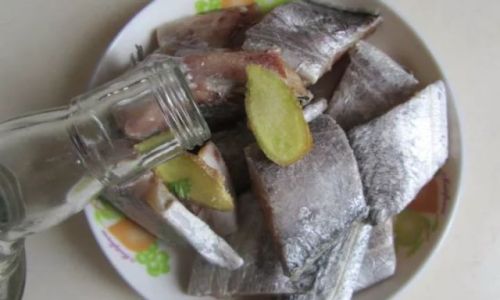Introduction
Marinating fresh fish fillets is an art that can transform a simple piece of seafood into a culinary masterpiece. Whether you’re preparing for a family dinner, a friend’s gathering, or a special occasion, knowing how to marinate fish correctly can elevate your dish to new heights. The process involves selecting the right fish, using the appropriate marinade ingredients, and understanding the marinating time to ensure that the fish retains its moisture, flavor, and texture.
In this comprehensive guide, we’ll delve into every aspect of marinating fresh fish fillets. From choosing the best fish to creating a flavorful marinade, and from marinating techniques to cooking tips, you’ll find all the information you need to make your fish dishes stand out.
Choosing the Right Fish
Before you can start marinating, you need to select the right fish. The type of fish you choose will greatly influence the final outcome of your dish. Here are some key factors to consider:
-
Freshness: Always opt for fresh fish. Fresh fish has a clean, mild scent, firm flesh, and bright, clear eyes. Avoid fish with a strong fishy odor, slimy texture, or dull eyes.

-
Fat Content: Fattier fish, such as salmon and mackerel, can handle stronger marinades and flavors. Leaner fish, like cod and tilapia, require gentler marinades to prevent them from becoming overly mushy.
-
Texture: Some fish have a firmer texture, which holds up well to marinades and cooking, while others are more delicate. Know the texture of your fish to determine the best marinating time and cooking method.
-
Flavor Profile: Different fish have distinct flavors. Choose a fish that complements the marinade ingredients you plan to use. For example, a lemon-dill marinade pairs well with mild-flavored fish like sole, while a spicy marinade works great with heartier fish like swordfish.
Common Types of Fish for Marinating
- Salmon: Rich in omega-3 fatty acids, salmon has a firm texture and robust flavor that can handle bold marinades.
- Tilapia: A versatile, mild-flavored fish that works well with a variety of marinades. Its firm texture holds up well to grilling and baking.
- Cod: Lean and delicate, cod requires gentle marinades to prevent over-soaking. It’s perfect for baking and frying.
- Halibut: Known for its sweet flavor and firm texture, halibut can handle a range of marinades and cooking methods.
- Mackerel: High in fat and flavor, mackerel is ideal for strong marinades and robust cooking methods like grilling and smoking.
Understanding Marinade Ingredients
A marinade is a mixture of acidic components (like vinegar, lemon juice, or wine), oil, herbs, spices, and sometimes sugar or salt. Each ingredient plays a crucial role in tenderizing, flavoring, and preserving the fish.
-
Acidic Components: Acids like vinegar, lemon juice, and wine help tenderize the fish by breaking down its proteins. They also add flavor and help preserve the fish by inhibiting bacterial growth.
-
Oil: Oil, such as olive oil, vegetable oil, or sesame oil, helps the marinade penetrate the fish and adds moisture and richness to the dish.
-
Herbs and Spices: Herbs and spices provide the marinade with its aromatic and flavor profile. Common choices include garlic, ginger, dill, parsley, cilantro, and paprika.
-
Sugar or Salt: Sugar can balance out the acidity of the marinade and add a hint of sweetness. Salt enhances the flavor of the fish and helps draw out moisture, which then reabsorbs the marinade flavors.
Creating a Perfect Marinade
When creating a marinade for fresh fish fillets, consider the following steps:
-
Balance the Flavors: Aim for a balance of sweet, sour, salty, and savory flavors. Start with a base of acidic components and oil, then add herbs, spices, and sugar or salt to taste.
-
Use Fresh Ingredients: Fresh herbs and spices will provide the best flavor. If using dried herbs, make sure they’re not too old.
-
Blend Well: Combine all the ingredients in a bowl or blender until well mixed. A smooth marinade will penetrate the fish more evenly.
-
Taste and Adjust: Before applying the marinade to the fish, taste it to ensure it has the flavor profile you desire. Adjust the ingredients as needed.
Sample Marinade Recipes
-
Lemon-Dill Marinade
- Ingredients: 1/4 cup olive oil, 1/4 cup fresh lemon juice, 2 tablespoons chopped fresh dill, 2 cloves garlic (minced), 1 teaspoon Dijon mustard, 1/2 teaspoon salt, and 1/4 teaspoon black pepper.
- Instructions: Whisk all ingredients together in a bowl until well combined.
-
Soy-Ginger Marinade
- Ingredients: 1/4 cup soy sauce, 2 tablespoons rice vinegar, 1 tablespoon sesame oil, 2 tablespoons grated fresh ginger, 2 cloves garlic (minced), 1 tablespoon honey, and 1/4 teaspoon red pepper flakes.
- Instructions: Combine all ingredients in a bowl and stir until the honey is fully dissolved.
-
Garlic-Herb Marinade

- Ingredients: 1/4 cup extra virgin olive oil, 2 tablespoons fresh lemon juice, 4 cloves garlic (minced), 1 teaspoon dried oregano, 1 teaspoon dried basil, 1/2 teaspoon salt, and 1/4 teaspoon black pepper.
- Instructions: Mix all ingredients in a bowl until well blended.
-
Spicy Cajun Marinade
- Ingredients: 1/4 cup vegetable oil, 1/4 cup apple cider vinegar, 2 tablespoons Worcestershire sauce, 1 tablespoon paprika, 1 teaspoon garlic powder, 1 teaspoon onion powder, 1 teaspoon dried thyme, 1/2 teaspoon cayenne pepper, and 1/2 teaspoon salt.
- Instructions: Whisk all ingredients together in a bowl until smooth.
Marinating Techniques
Once you have your marinade ready, it’s time to apply it to the fish. Here are some effective marinating techniques:
-
Basting: Place the fish fillets in a shallow dish and pour the marinade over them. Use a brush or spoon to baste the marinade onto both sides of the fish. This method is great for fish that will be grilled or baked.
-
Vacuum Sealing: Place the fish fillets and marinade in a vacuum-seal bag and remove as much air as possible. This method allows the marinade to penetrate the fish more deeply and evenly. Vacuum-sealed fish can be marinated for longer periods without becoming overly mushy.
-
Zip-Top Bag: If you don’t have a vacuum sealer, you can use a zip-top plastic bag. Place the fish fillets and marinade in the bag, seal it, and then gently squeeze out as much air as possible.
-
Marinating Dish: Simply place the fish fillets in a shallow dish, pour the marinade over them, and cover with plastic wrap or aluminum foil. This method is easy and works well for shorter marinating times.
Marinating Times
The marinating time will depend on the type of fish, the strength of the marinade, and your preferred flavor intensity. Here are some general guidelines:
- Lean Fish: Marinate for 15-30 minutes.
- Medium-Fat Fish: Marinate for 30 minutes to 1 hour.
- Fatty Fish: Marinate for 1-2 hours.
Remember, over-marinating can cause the fish to become mushy and lose its texture. If you’re unsure, start with a shorter marinating time and taste-test the fish before cooking.
Cooking Tips
After marinating, it’s time to cook your fish. Here are some tips to ensure a successful outcome:
-
Pat Dry: Before cooking, remove the fish fillets from the marinade and pat them dry with paper towels. This will help them form a nice crust when grilled or pan-seared.
-
Preheat Your Cooking Surface: Whether you’re grilling, baking, or frying, make sure your cooking surface is preheated to the correct temperature. This ensures that the fish cooks evenly and develops a nice color.
-
Don’t Overcook: Fish cooks quickly, so keep a close eye on it. Overcooking can cause the fish to become dry and flavorless. Use a thermometer to check the internal temperature, aiming for 145°F (63°C) for most fish.
-
Rest the Fish: After cooking, let the fish rest for a few minutes before serving. This allows the juices to redistribute, ensuring a moist and flavorful final dish.
Conclusion
Marinating fresh fish fillets is a simple yet powerful way to elevate your seafood dishes.






0 comments